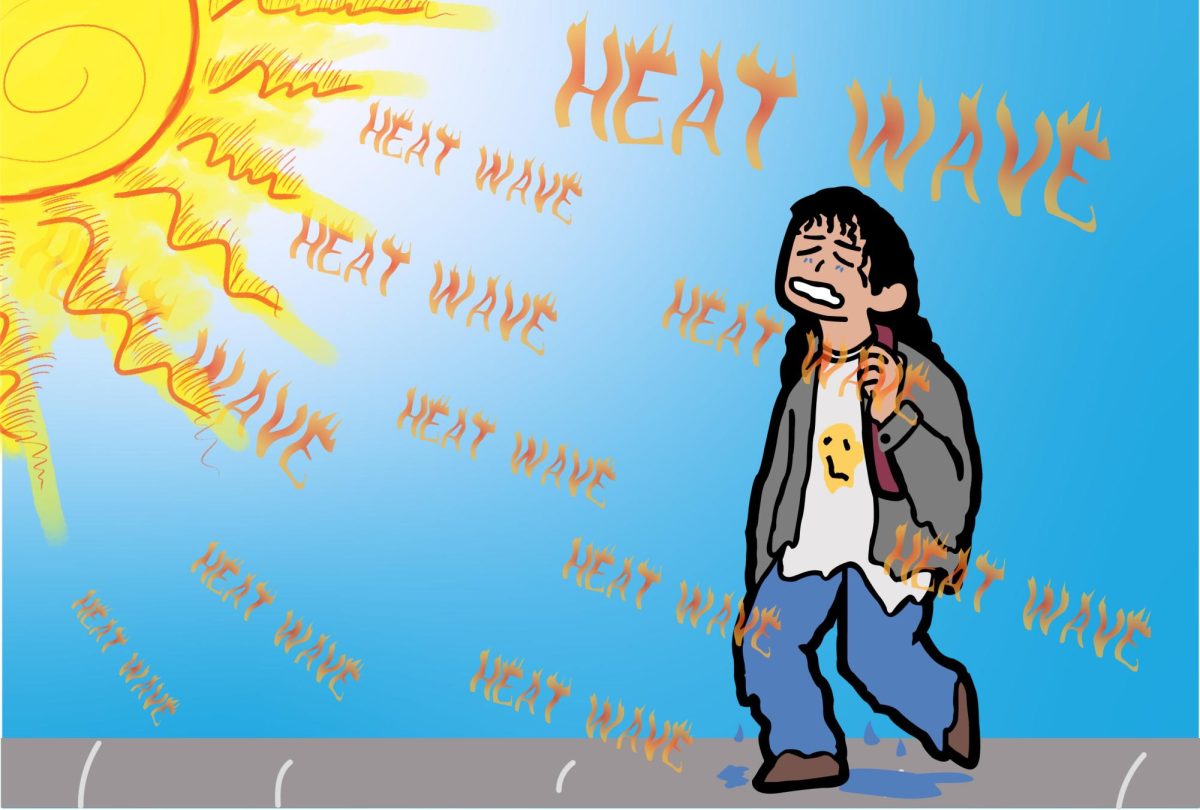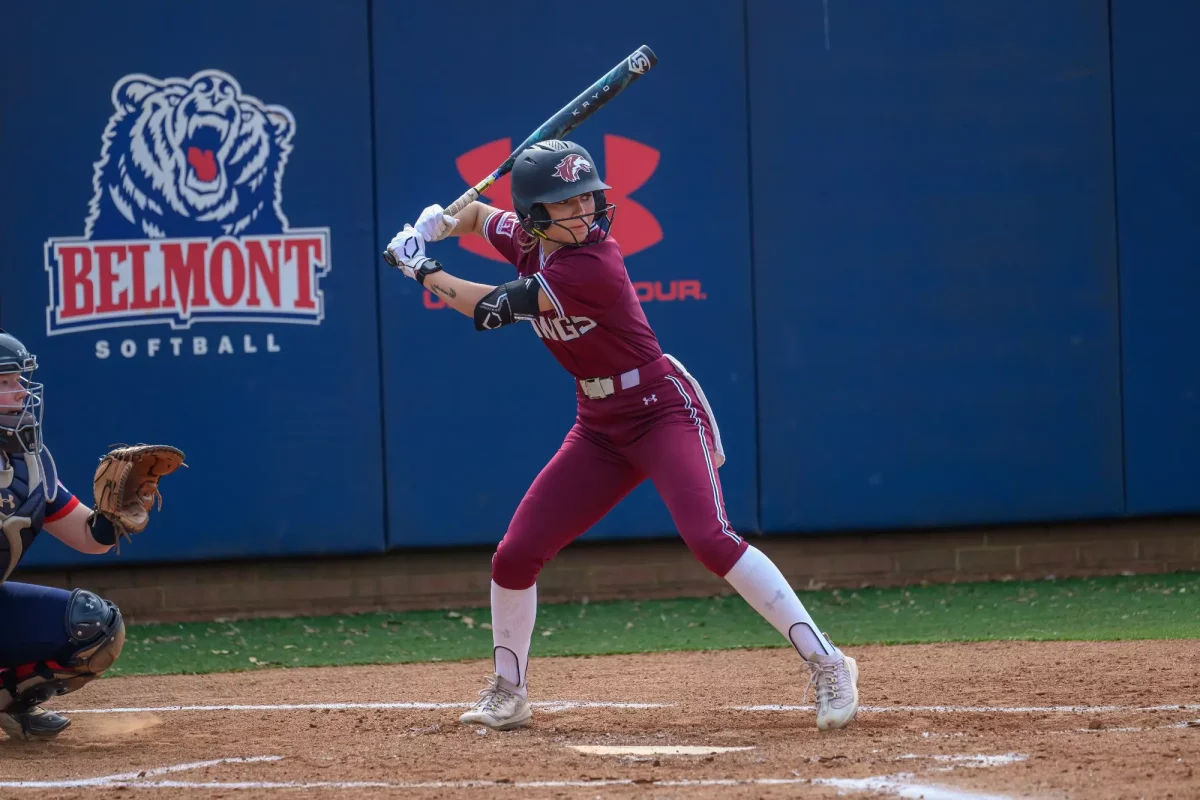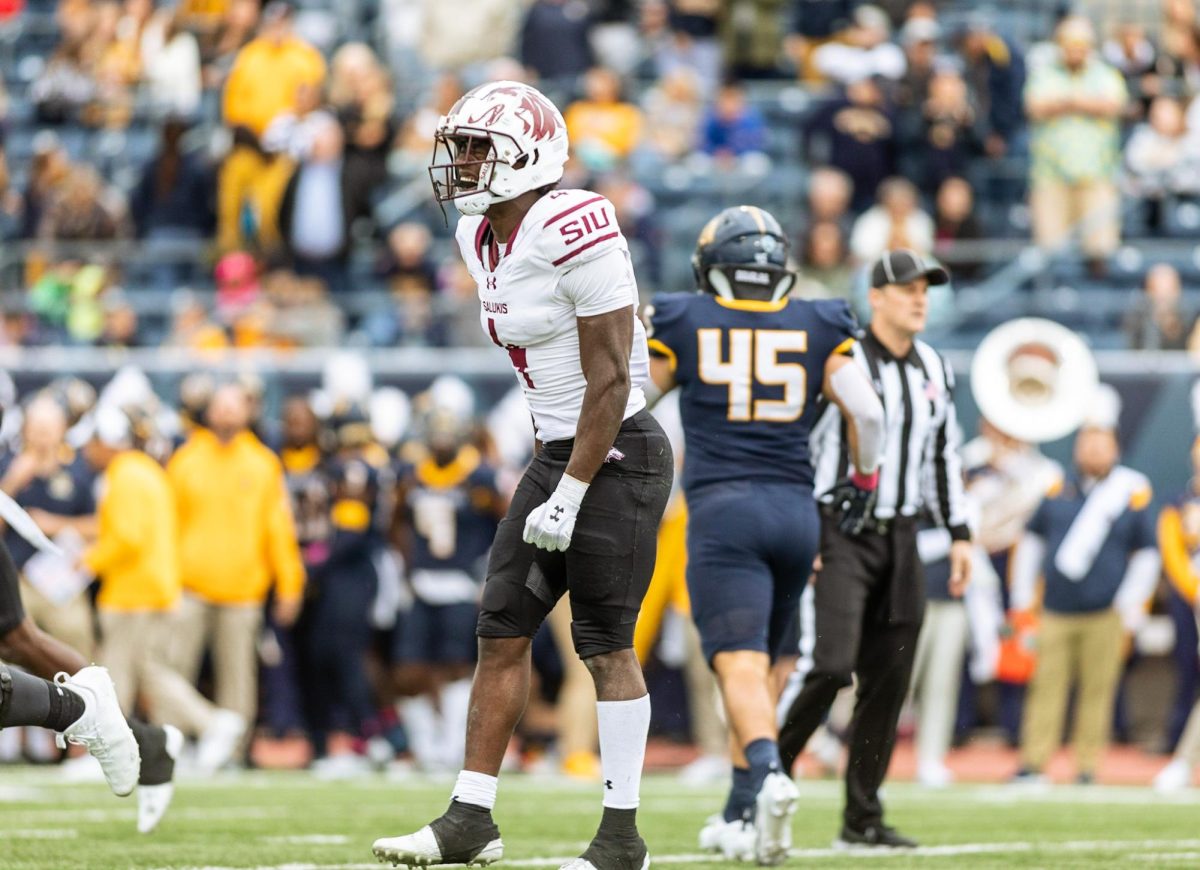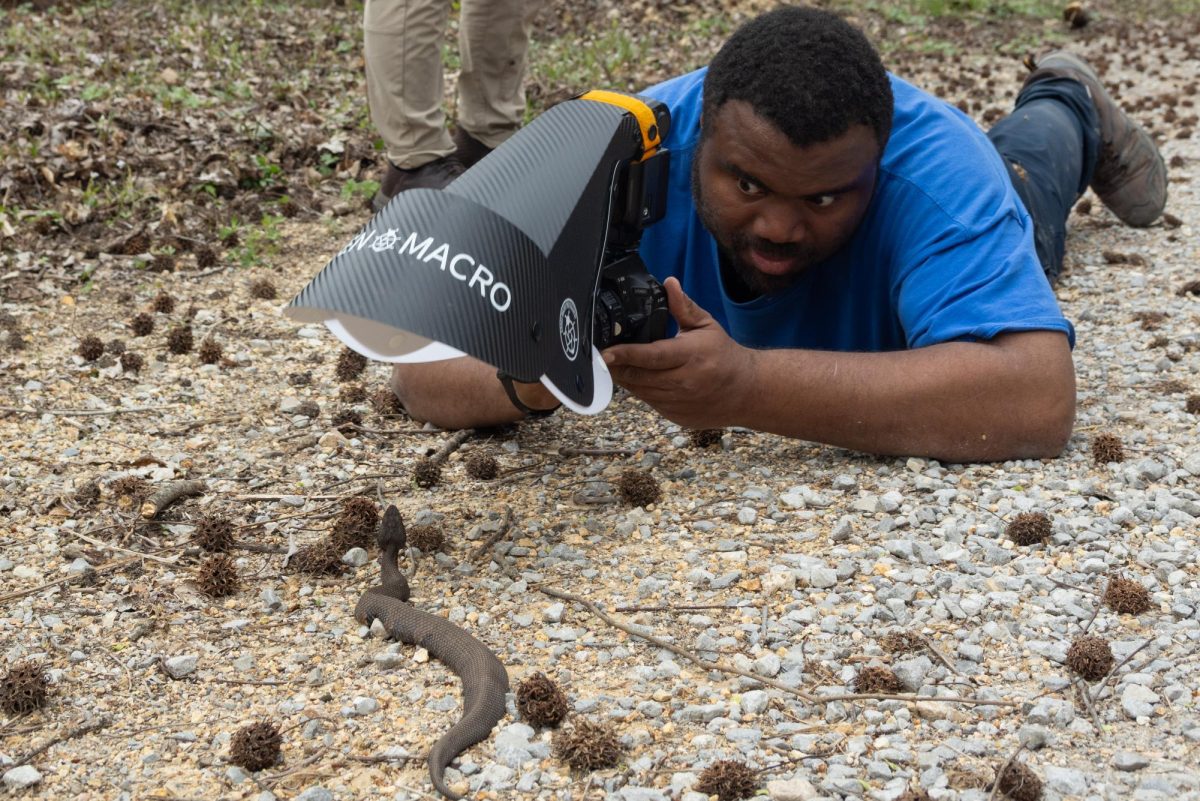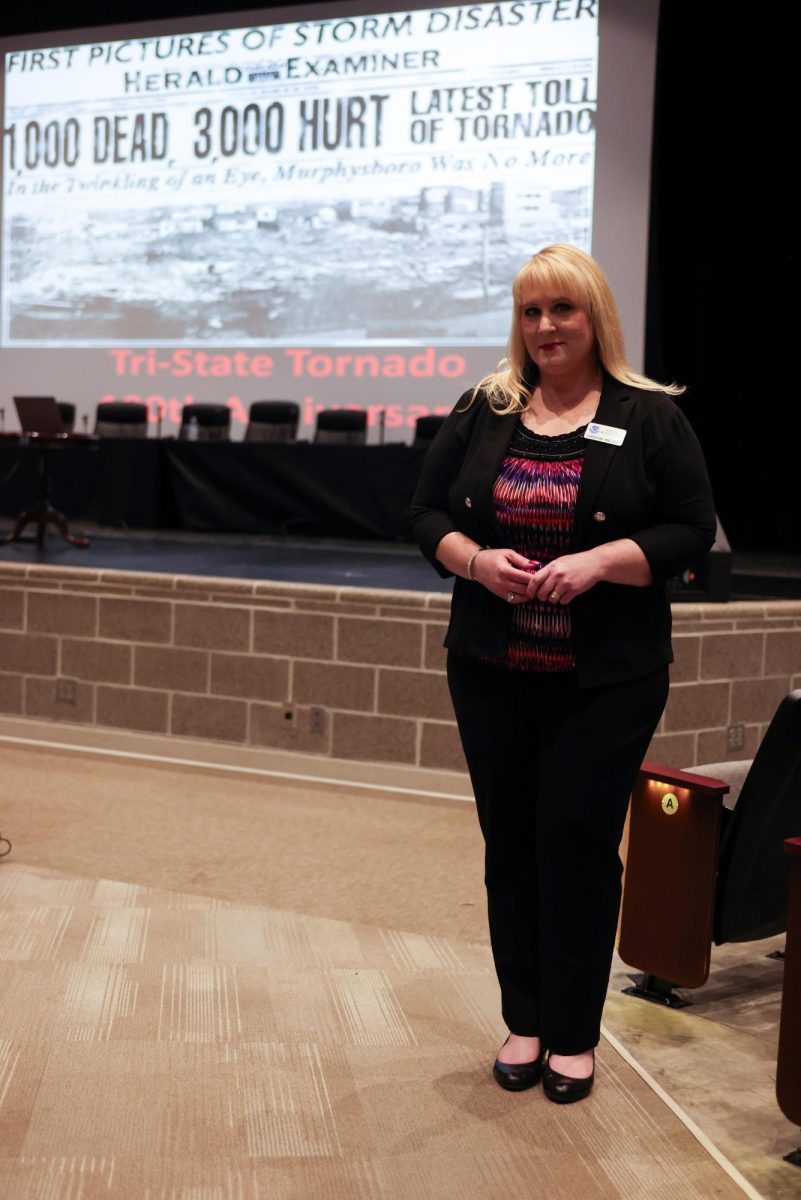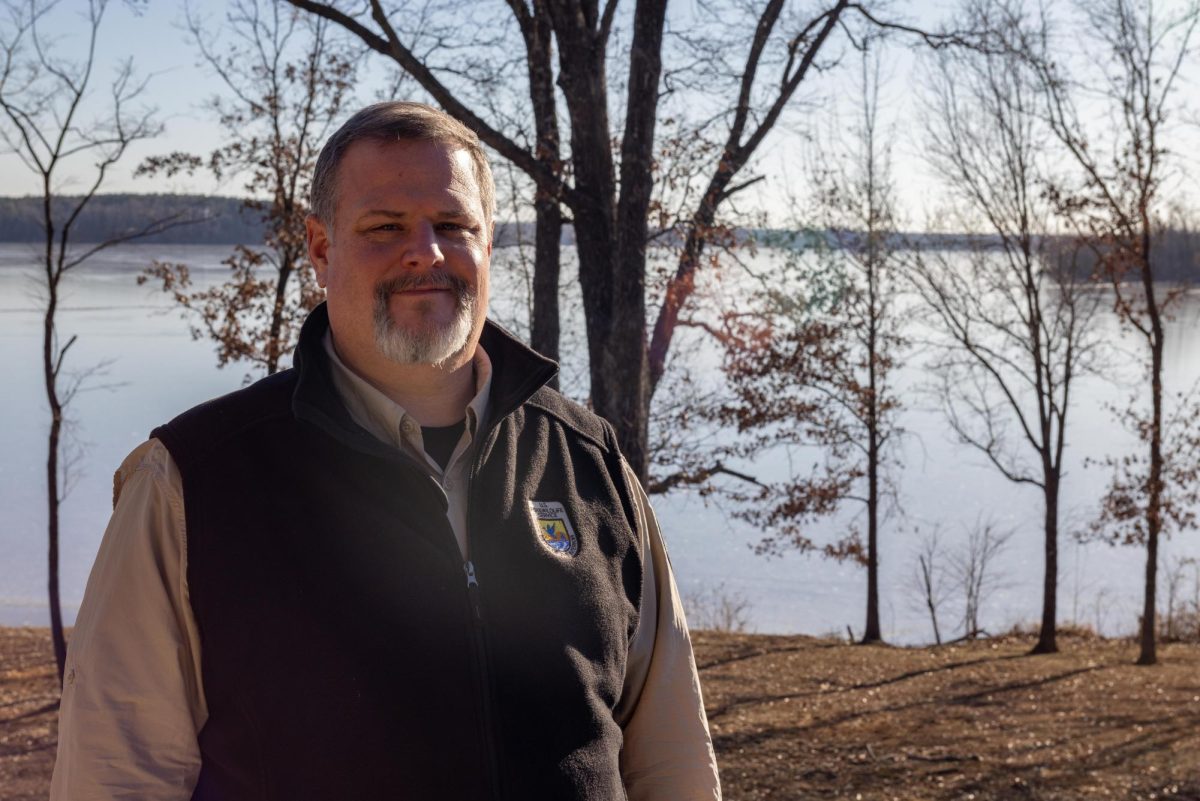Dripping sweat and flushed red faces are not the best look for the start of the school year, but they’ve been the norm as record heat greeted students, faculty and staff back to campus.
Stephon, a freshman architecture major, said, “I’ve never been so exhausted just walking outside.”
Extreme heat indexes of well over 100 degrees have swept across much of the United States, including southern Illinois. While this week has brought a slight break in temperatures, they will soar back into the 90s starting this weekend.
Advertisement
Multiple days of extreme temperatures throughout July and August have left Carbondale residents tired and ready for the break.
Audrey Wagner, a senior lecturer in Geography at SIU, is able to explain the cause for the heat, though the answer has many different parts. The first is related to how air is moving through jet streams.
“The jet stream [narrow bands of strong wind in the upper atmosphere] is shifting. So that very hot air from over Texas and northern Mexico will get pushed up in our direction.”
Wagner said there is a pattern; hot air has been hanging over Texas all summer, and occasionally some of the air escapes and moves north. Solar heating, which Wagner said happens when there aren’t clouds present, has also contributed to the extreme temperatures.
“The circulation pattern has just let the air sit [over Texas] and heat up for a while,” Wagner said.
It’s important to note that the air temperatures that are reported are taken in the shade; according to Wagner, “it’s easily 15 degrees Fahrenheit hotter” in the sun.
The U.S. saw some of its hottest weeks on record this summer, with certain places hitting temps above 120 degrees. Other countries have baked under record heat as well, with climate scientists agreeing it is another sign that global warming is having an immediate impact.
Advertisement*
A recent study from World Weather Attribution found that this summer’s heat waves on multiple continents would have been “virtually impossible… if humans had not warmed the planet by burning fossil fuels.”
The intensely hot air combined with the humidity has many students saying they’ve never experienced anything like it.
Jonathan, a freshman studying sociology said, “It doesn’t get this hot in Chicago. The heat, it’ll come down, but you won’t feel all this humidity.”
On especially hot and humid days, the heat index is often the best measure of what temperature a person’s body is experiencing because the heat index incorporates humidity into its projection.
“You sweat to cool your body through the evaporation of that sweat, but the humidity makes it harder for the sweat to evaporate,” Wagner said. “The heat index accounts for that reduced evaporation and indicates that your body will be experiencing a higher effective temperature because your cooling system can’t keep up.”
While sweat may be keeping people cool, it still is something that can be a bit of an annoyance on a school day.
Tori, a freshman marketing major, said, “How do you walk outside and your body just feels wet?”
Students are making an effort to try to stay out of the heat as much as possible. Some have been walking to class with umbrellas, while others have taken alternate, cooler routes.
“I’m staying out of the sun as much as I usually do, taking shortcuts cutting through buildings on the way,” Stephon said.
SIU is doing its part to keep students cool too.
Jeffery T. Burgin Jr., the vice chancellor for student affairs, said, “Students who need a cool space to study or hang out are welcome to use the lounges and other spaces at the student center, which is open 7 a.m. to 10 p.m. on weekdays, 10 a.m. to 10 p.m. on Saturdays, and 2-8 p.m. on Sundays.”
Burgin also notes that “campus buildings, including all residence halls, are air conditioned.”
While classes are mostly inside and air conditioned, some events have to happen outside. Athletic practices for sports like women’s soccer and football are still happening despite the heat.
SIU football head coach Nick Hill is doing his best to keep his athletes safe.
“We’re always looking at whether it’s weather, it’s heat, we go by the guidelines. So we made a decision and as a coaching staff, we started practicing at 6:15 [a.m.] all week, before the sun even gets up. It’s cool enough to practice out here and we kept them out of the heat and afternoons,” Hill said.
Wagner said everyone needs to stay safe.
“Heat is very dangerous; it kills more people in the U.S. each year than any other form of ‘severe weather,’” she said.
Wagner cautions people to be on the lookout for signs of heat illness, which include dizziness and nausea. If you must work outside, be sure to stay out of the direct sun and take frequent breaks.
All students should have received an email from Dr. Andrew Riffey, the medical chief of staff of Student Health Services, who outlined several general practices students should follow while at school; as well as some to keep in mind during hot weather.
Riffey encourages students to, “drink plenty of fluids, such as water or sports drinks; sodas, juices, and energy drinks are not beneficial,” and to “wear loose, lightweight clothing and don’t wear too many layers.”
“Our student health center is prepared to assist students with medical needs, including those caused by excessive heat exposure,” Burgin said.
Advertisement



